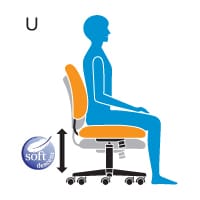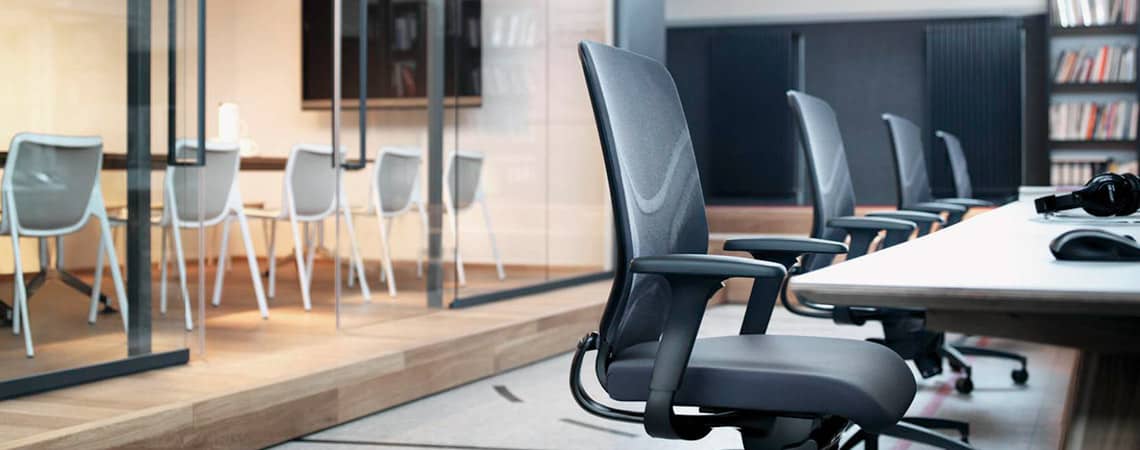Absolutely! Being seated in the proper position for the task is critical to the comfort of the employee and their long-term health. Ergonomic task seating is centric to the task that you are performing and should almost feel neutral to your body’s position. There are thousands of chairs out there and it can be very difficult to select one that is best for you and (especially if you already have “issues”) you should have one fitted to you. All ergonomic task chairs have adjustments for the mechanism that allow many different positions so having a professional show you how to adjust it is critical in finding the right fit. Here are all the various ergonomic features to look for when looking for your next office chair!
Ergonomic features:
A. Tension Adjustment
Increase or decrease to match body weight. Allows you to rock comfortably, without heavy pushing, reducing muscle fatigue.
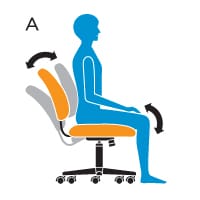
B. Chair Tilt Lock
Lock the tilt movement in position(s) to accommodate your working posture. Allows you to lock your chair in a comfortable and supportive position (can be either single position or infinite style).
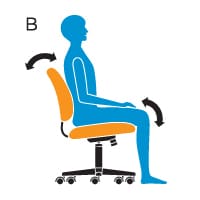
C. Seat Height
Raise or lower to allow your feet to rest flat on the floor. Avoids pressure under your thighs, easing blood flow.
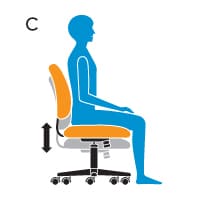
D. Back/Lumbar Height
Raise or lower to position lumbar support in your lumbar area. Reduces likelihood of back pain.
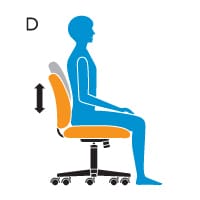
E. Seat Depth
Change the depth of the seat to accommodate the length of your thighs. Keeps your back in contact with the backrest while avoiding pressure behind your knees.
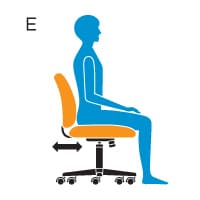
F. Seat Angle Adjustment
Forward and/or rearward. Allows chair to tilt forward and/or rearward changing the angle of your thighs in relation to the floor. Helps reduce disc pressure during forward leaning tasks.
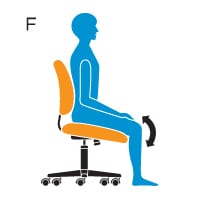
G. Back Angle
Adjust to change the angle of your torso in relation to your thighs. Helps reduce disc pressure and relaxes your back muscles
.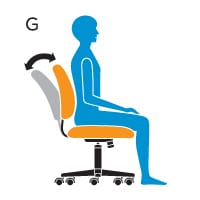
H. Arm Height
Raise or lower to support your forearms. Reduces muscular effort in neck and shoulders, minimizing risk of pain.
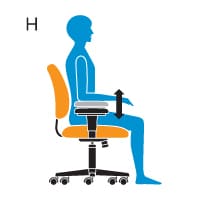
J. Knee-Tilt Movement
Chair tilts from a pivot point at the front of the seat, keeping your feet on floor as you rock. Maintains stability while enhancing blood flow.
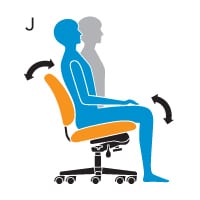
L. Synchro-Tilt Movement
Backrest reclines at a faster rate than the seat, increasing the angle between your torso and thighs. Enhances comfort and encourages dynamic body movement.
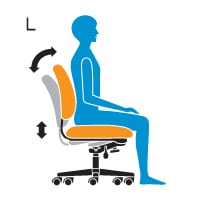
M. Waterfall Seat Edge
Reduces pressure at the back of the knee, contributing to good blood flow.
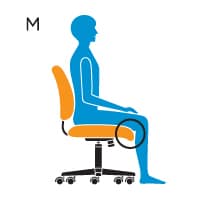
N. Properly Contoured Cushions
Support the body effectively, allowing you to sit longer without discomfort.
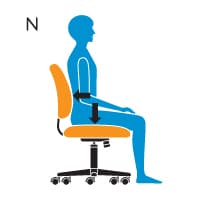
Q. Width Adjustable Arms
Allows outward movement of armrests to match shoulder breadth. Ensures armrests properly support forearms, reducing muscular effort in neck and shoulders.
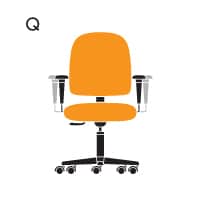
R. Arm Rotation
Rotate arm cap to support your forearm in various positions. Reduces muscular effort in neck and shoulders, minimizing risk of pain.

S. Center-Tilt Movement
Chair tilts from a pivot point under the center of the seat allowing you to rock. When your feet are well supported, blood flow is enhanced.
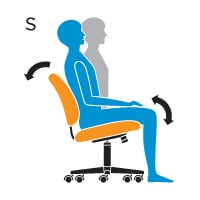
T. Push Button
Push to activate control. Location within reach increases your adjustment. Promotes good posture as you move to various positions.
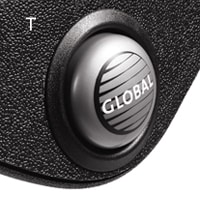
U. Soft Descent Pneumatic Lift
Gently and gradually lowering the seat helps you easily select proper seat height without causing a jerking motion.
